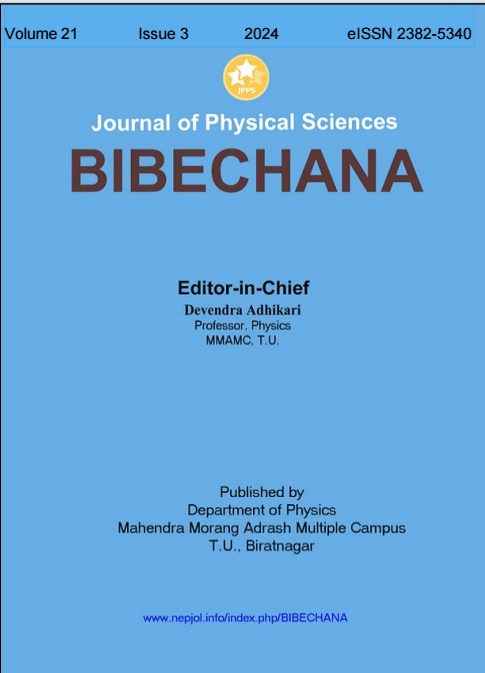Comparative study of UV index in the selected sites of Nepalse teritory
DOI:
https://doi.org/10.3126/bibechana.v21i3.69319Keywords:
UV index, UV radiation, Aerosal, Surface albedo, Altitude effect, Latutide effectAbstract
Progression and development of many under- water and terrestrial life forms are influenced by many environmental factors, including the amount of ultraviolet radiation present at water and the Earth’s surface. Spectral measure of solar UV radiation helps us to understand the causes of change in environment and also raise public awareness about potential threats when the index value goes higher. This paper presents the value of UV index over six different locations of Nepal which are situated at different latitude and at different altitude. The numeral values of UV index during solar noon, provided by POWER data sets from year 2001 AD to 2021 AD, was used which were then compared with standard value categories of UV index based on WHO guideline. The UV index value for these locations were compared on monthly and annual basis. Upon analysis, it was found that during solar noon average value of UV index above Dolpa was highest with the value 9.10. The maximum value of UV index above other locations were: 8.43(Birgunj), 8.13(Hetauda), 6.14(Rolpa) and 5.45(Tulsipur) respectively. During mid-summer the value of UV index in each of these locations fall into high or very high category as per the WHO guideline. Thus, people from these locations are vulnerable to the exposure of harmful UV radiation. This study reveals that the special care should be taken during midday from June through August.
Downloads
Downloads
Published
How to Cite
Issue
Section
License
Copyright (c) 2024 The Author(s)

This work is licensed under a Creative Commons Attribution-NonCommercial 4.0 International License.
This license enables reusers to distribute, remix, adapt, and build upon the material in any medium or format for noncommercial purposes only, and only so long as attribution is given to the creator.




